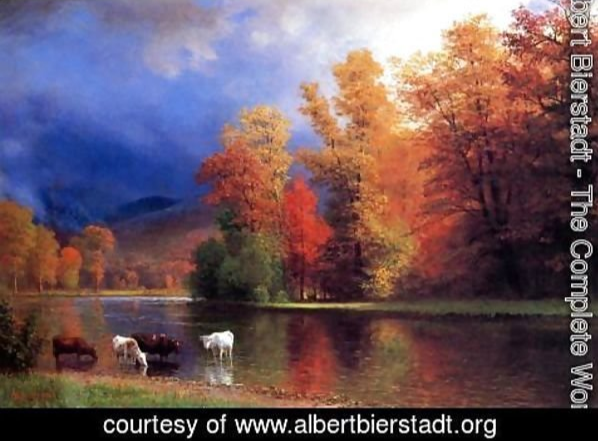Early Influences: Tracing Albert Bierstadt’s Artistic Roots

To understand the formative years of Albert Bierstadt, one must delve into the early influences that shaped his artistic roots. Bierstadt’s journey as a pioneering landscape artist was shaped by a combination of personal experiences, mentorship, and exposure to various art forms.
Growing up in a family that valued artistic expression, Albert Bierstadt was surrounded by creativity from an early age. His father, who was a skilled artisan, played a significant role in nurturing his artistic abilities. Under his guidance, Bierstadt developed a keen eye for detail and a strong foundation in craftsmanship.
Bierstadt’s education further laid the groundwork for his artistic development. He received formal training at the Düsseldorf Academy in Germany, where he honed his technical skills and studied the works of European masters. The exposure to classical art and the meticulous academic training greatly influenced Bierstadt’s approach to composition, lighting, and perspective.
However, it was Bierstadt’s encounters with the American landscape that truly ignited his artistic passion. Inspired by the vast and majestic landscapes of the American West, he felt a deep connection to nature and a desire to capture its beauty on canvas. The untamed wilderness, sweeping vistas, and awe-inspiring natural wonders became the subjects of his artistic exploration.
Bierstadt’s early influences extended beyond his personal experiences to the works of other artists. He drew inspiration from the luminist painters, who sought to capture the atmospheric qualities of light in their landscapes. Their ethereal and tranquil representations of nature resonated with Bierstadt, influencing his own depictions of light and atmosphere in his later works.
Furthermore, Bierstadt was influenced by the Hudson River School, a group of American landscape painters known for their romanticized portrayals of the American wilderness. The poetic and idealized interpretations of nature by artists such as Thomas Cole and Asher Durand left a lasting impact on Bierstadt’s artistic sensibilities, as he too sought to convey the sublime beauty and grandeur of the American landscape.
Tracing Albert Bierstadt’s artistic roots reveals the diverse range of influences that shaped his unique style and approach to landscape painting. From his upbringing in an artistic environment to his formal training in Europe, and the profound impact of the American wilderness and the works of other artists, these early influences laid the foundation for Bierstadt’s remarkable career as a pioneering landscape artist.
Inspired by Nature: Exploring Bierstadt’s Deep Connection with the Landscape

Albert Bierstadt’s artistic journey was intimately intertwined with his deep connection to nature. Throughout his career, Bierstadt drew inspiration from the beauty and majesty of the natural world, resulting in awe-inspiring landscape paintings that captured the sublime essence of the American wilderness.
Bierstadt possessed a profound appreciation for the intricacies and grandeur of the landscapes he encountered. Whether it was the towering peaks of the Rocky Mountains, the vastness of the Great Plains, or the serenity of pristine lakes, Bierstadt sought to convey the awe-inspiring qualities of the natural world through his art.
His deep connection with the landscape was not merely superficial; it stemmed from a genuine admiration and reverence for the power and magnificence of nature. Bierstadt believed that nature held a spiritual significance, and he aimed to translate this spiritual essence onto canvas. His paintings were not just visual representations but also invitations for viewers to connect with the transcendental beauty of the natural world.
Bierstadt’s meticulous attention to detail and his ability to capture the nuances of light, color, and texture allowed his paintings to come alive with a sense of realism and depth. Through his masterful brushwork, he conveyed the play of sunlight on mountains, the shimmering reflections in bodies of water, and the intricate details of flora and fauna. His paintings were immersive experiences, inviting viewers to step into the scene and experience the landscape firsthand.
Moreover, Bierstadt’s paintings were not mere reproductions of what he saw but rather a synthesis of his observations, emotions, and personal interpretations. He painted not only what the eye could see but also what the heart could feel. His works evoked a sense of wonder, capturing the vastness of space, the changing moods of the sky, and the timeless beauty of untouched landscapes.
Bierstadt’s deep connection with nature also extended beyond his artistic pursuits. He ventured into remote and unexplored territories, often embarking on arduous journeys to witness the untouched wilderness firsthand. These firsthand experiences enriched his understanding of the landscape, allowing him to capture its essence with authenticity and passion.
Inspired by nature, Albert Bierstadt’s artworks continue to captivate audiences with their sheer beauty and the emotional resonance they evoke. His deep connection to the landscape, coupled with his technical mastery and artistic vision, established him as a leading figure in the genre of landscape painting. Bierstadt’s paintings serve as a testament to the enduring power and timeless allure of the natural world, inviting us to marvel at its splendor and reflect on our place within it.
Conclusion
Albert Bierstadt’s formative years as a pioneering landscape artist were marked by a deep connection to nature, a diverse range of influences, and a relentless pursuit of capturing the essence of the American wilderness. Through tracing his artistic roots and exploring his profound connection with the landscape, we gain a deeper understanding of the transformative journey that shaped Bierstadt into an iconic figure in the realm of landscape painting.
Bierstadt’s early influences, including his upbringing in an artistic environment, formal training in Europe, and encounters with the American landscape, played a pivotal role in shaping his artistic vision. These influences instilled in him a keen eye for detail, a mastery of technique, and a deep appreciation for the sublime beauty of the natural world.
His deep connection to nature was more than a mere source of inspiration; it was a profound reverence for the power and spiritual significance of the landscape. Bierstadt’s ability to translate the awe-inspiring qualities of nature onto canvas allowed his paintings to resonate deeply with viewers, inviting them to contemplate the grandeur and transcendental beauty of the American wilderness.
Through his meticulous attention to detail and his skillful portrayal of light, color, and texture, Bierstadt’s paintings came alive with a sense of realism and depth. His works transported viewers to untouched vistas, inviting them to immerse themselves in the scene and experience the splendor firsthand.
Bierstadt’s formative years were also marked by his adventurous spirit and his willingness to explore uncharted territories. His firsthand experiences in the American wilderness further enriched his artistic understanding, enabling him to infuse his paintings with authenticity and a genuine sense of place.
Today, Albert Bierstadt’s legacy endures as his artworks continue to captivate audiences worldwide. His unique blend of technical mastery, emotional resonance, and spiritual connection to the landscape solidifies his place as a pioneering figure in the genre of landscape art. Bierstadt’s paintings serve as a testament to the enduring power and timeless allure of nature, reminding us of the profound beauty that surrounds us and inspiring us to cherish and protect the natural world.
In unveiling the formative years of Albert Bierstadt, we gain insight into the transformative journey that shaped him into a visionary landscape artist. His legacy serves as a testament to the profound impact that art can have in capturing the spirit of the natural world and inviting us to reflect on our place within it.








